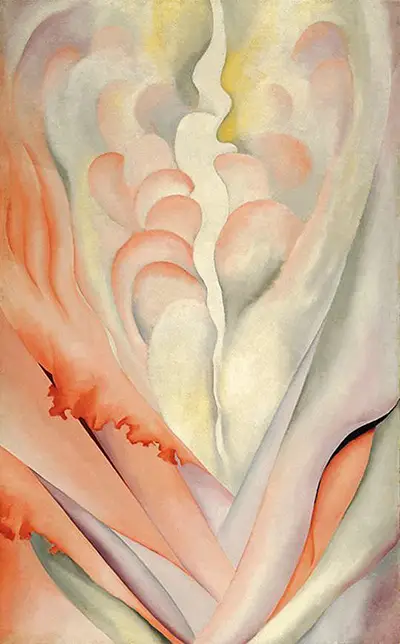The way in which O'Keeffe zooms in removes any real context of the flower - we cannot see the edges on either side, nor any of the accompanying leaves of the plant. This creates an abstract artwork in which colour and form suggest other shapes that are not really there. For example, there are parts which resemble human body parts, such as ears and noses, but this is purely a coincidence. We would not browse a flower head with as much interest as this normally and this makes it harder for our brains to decipher just what we are looking at. Companre Flower Abstraction, therefore, with some of the artist's other flower paintings, where the full head is displayed. The difference is highly noticeable in going from a clear depiction of a plant to an almost random array of shapes and colour, as found here.
One of the advantages of this series of work from O'Keeffe is getting the rare opportunity to see such detail of these beautiful creations, something that would not normally occur. Each and every intricate part is beautifully rendered, with shadows used to help the flower appear deeper and more lifelike. They could also aid those studying plants and the various components that come together to create these flowers. Those more interested in the aesthetic purpose of this painting will see a stunning array of bright colour which is typical of this artist, and also the Modernist movement more generally. Tones of yellow, orange, pink surround white gradients in a delightful and uplifting array of colour that remind many of the summer months.
Flower Abstraction is dated at 1924, making it one of her earliest enlarged flower paintings. It is also amongst her boldest, with details enlarged more than in some of her other versions, where different flowers were used. The sizes used was also intended to immerse one in the power and beauty of nature, just as Mark Rothko's huge murals were for the purpose of overwhelming you with colour. Once speaking generally about her work in this genre, she exclaimed:
"...Paint it big and they will be surprised into taking time to look at it—I will make even busy New Yorkers take time to see what I see of flowers..."
